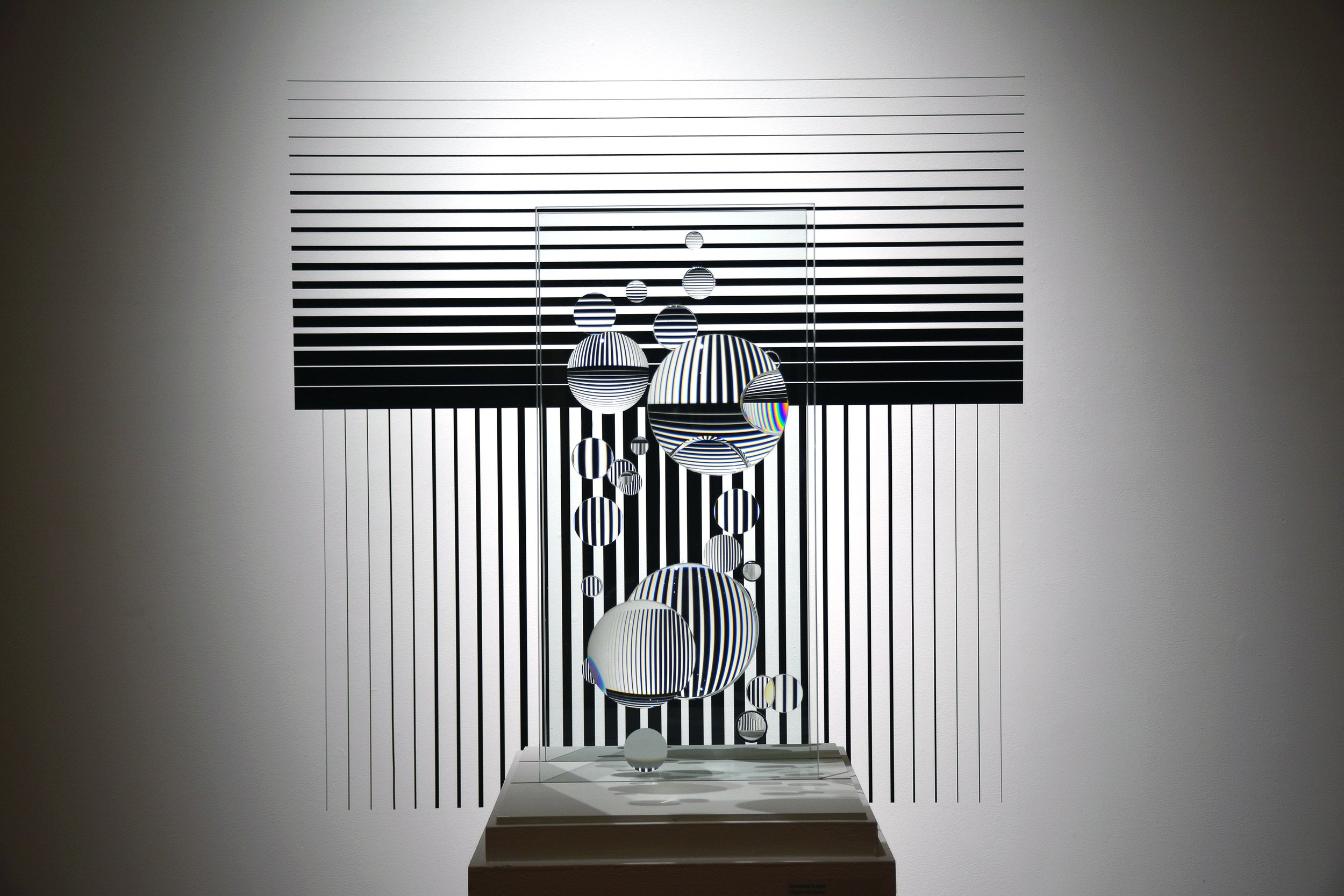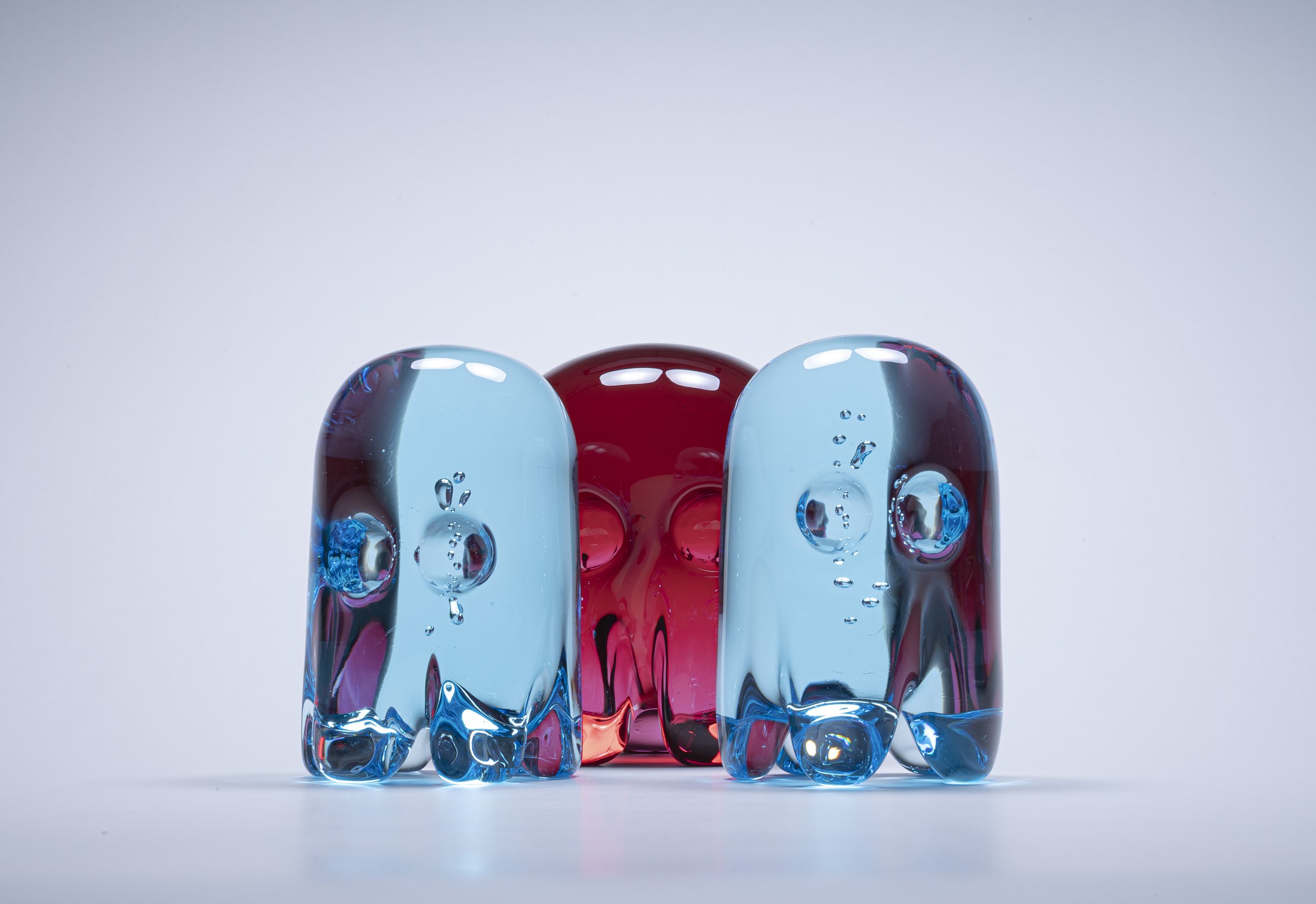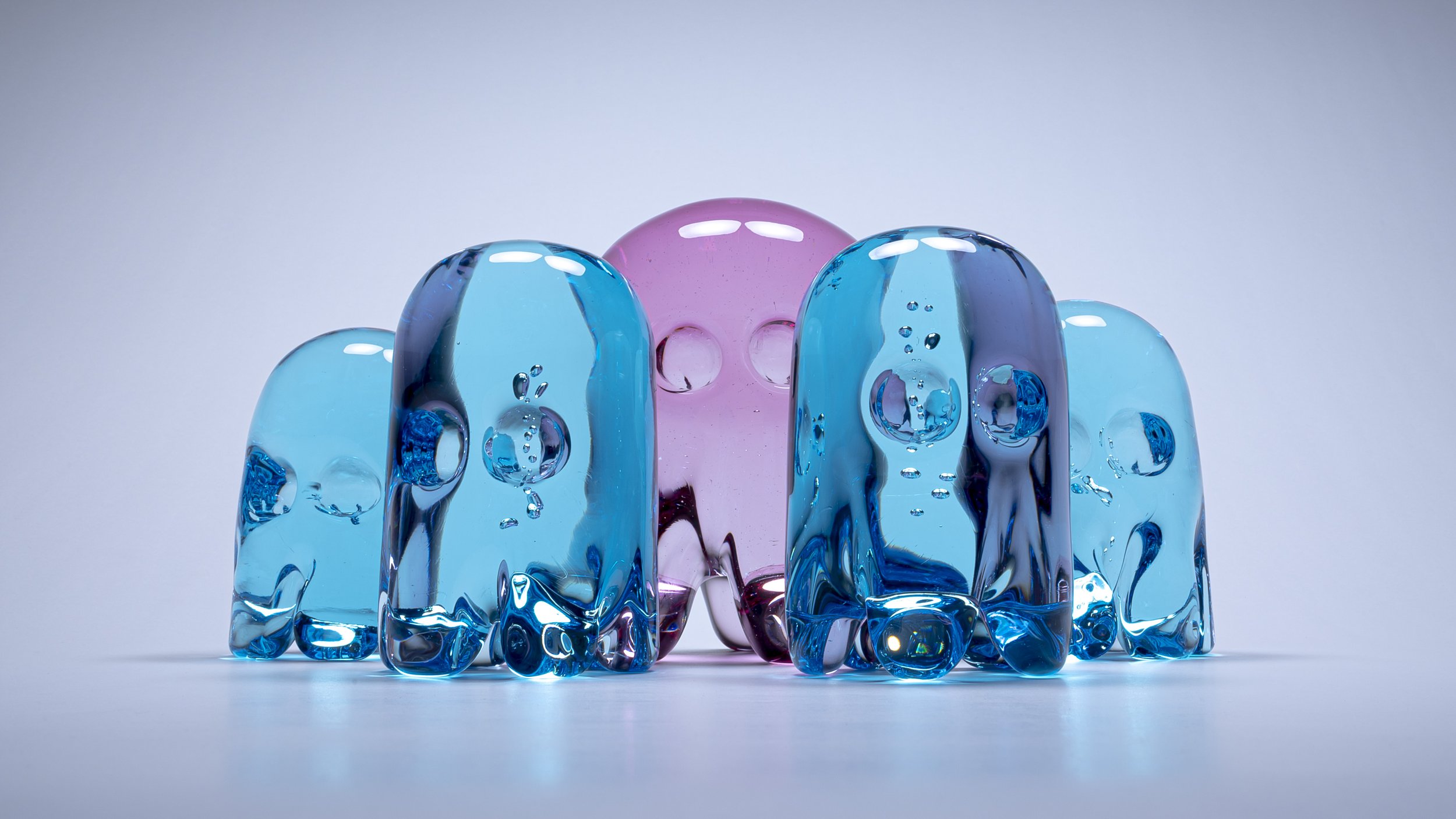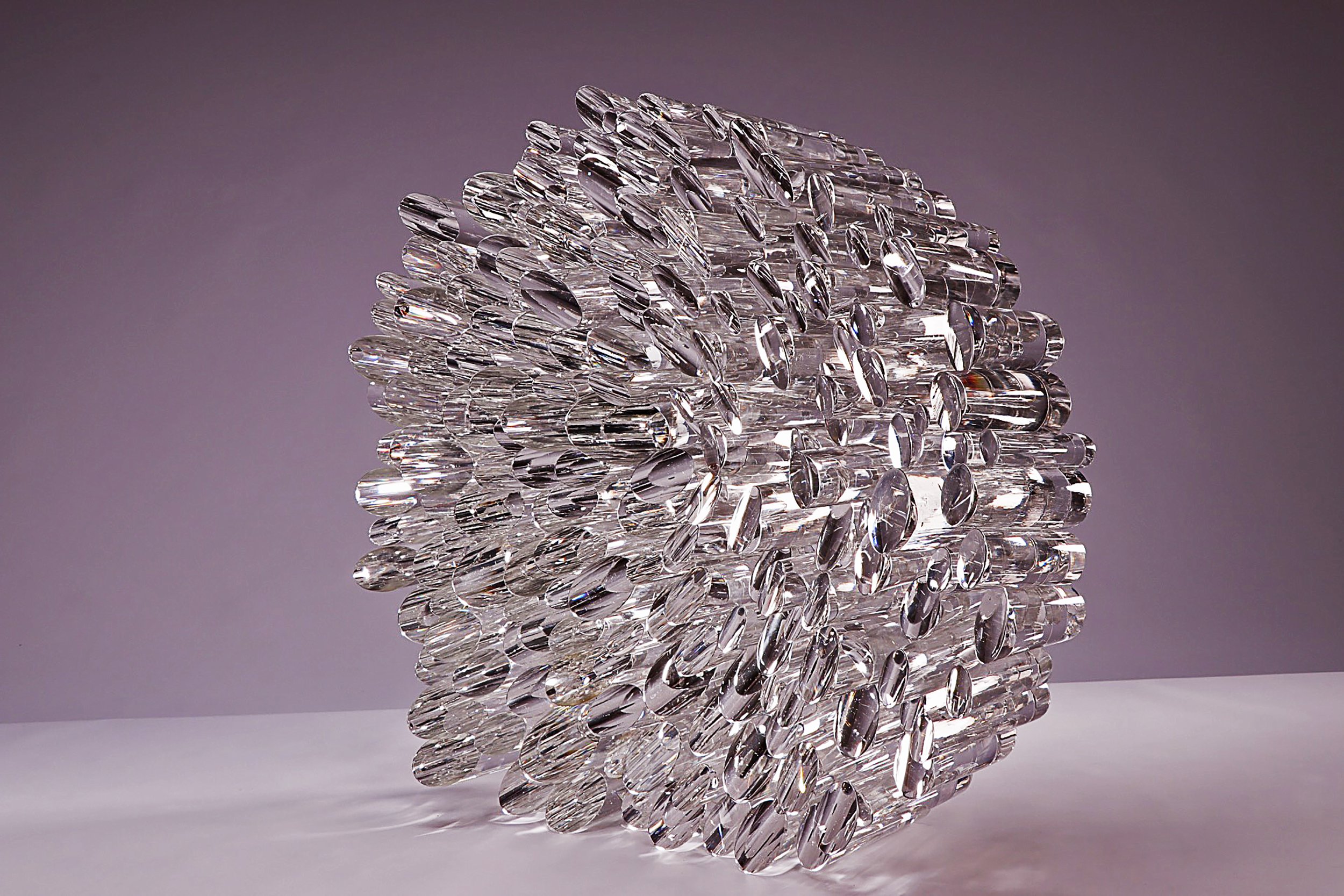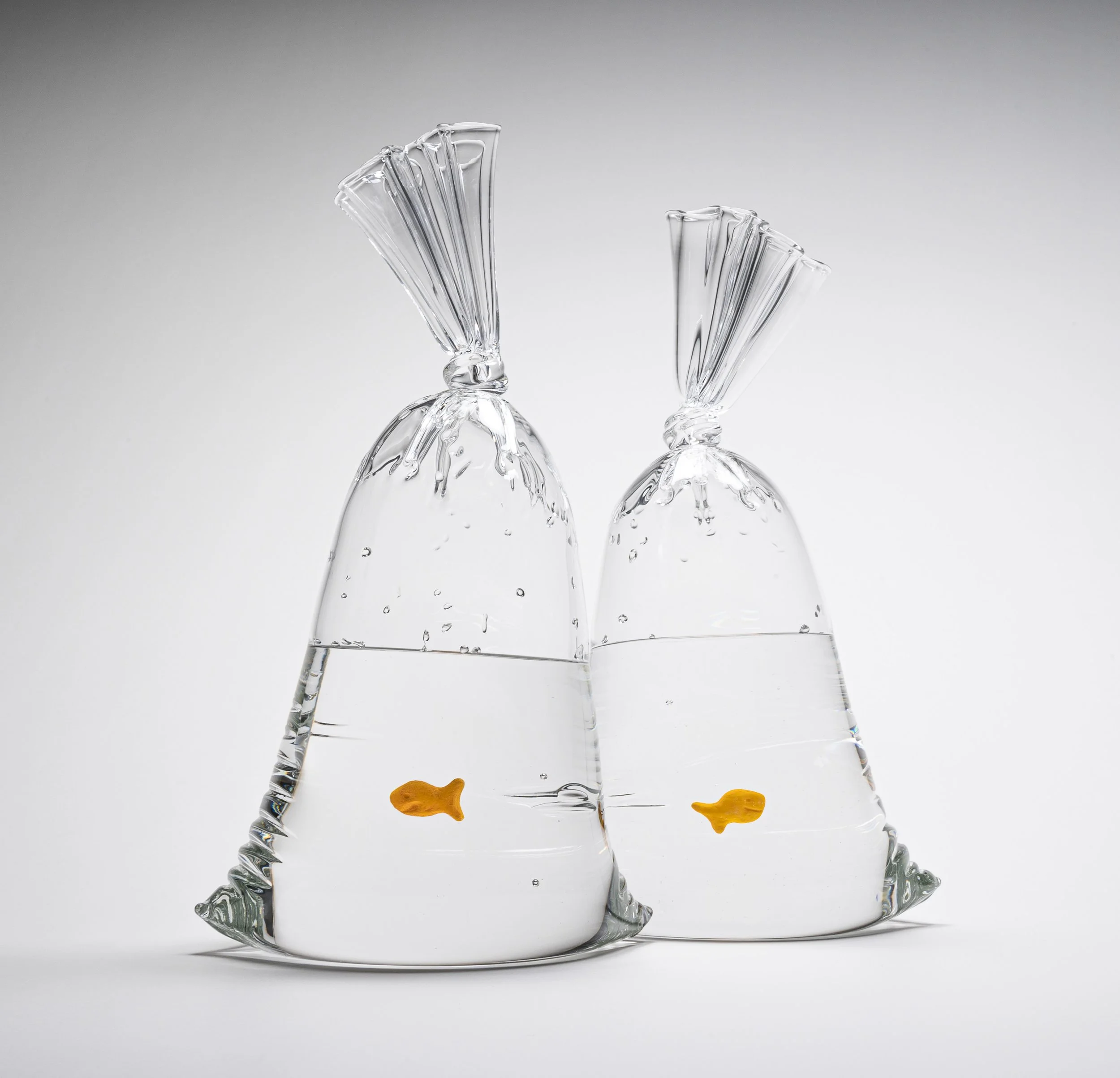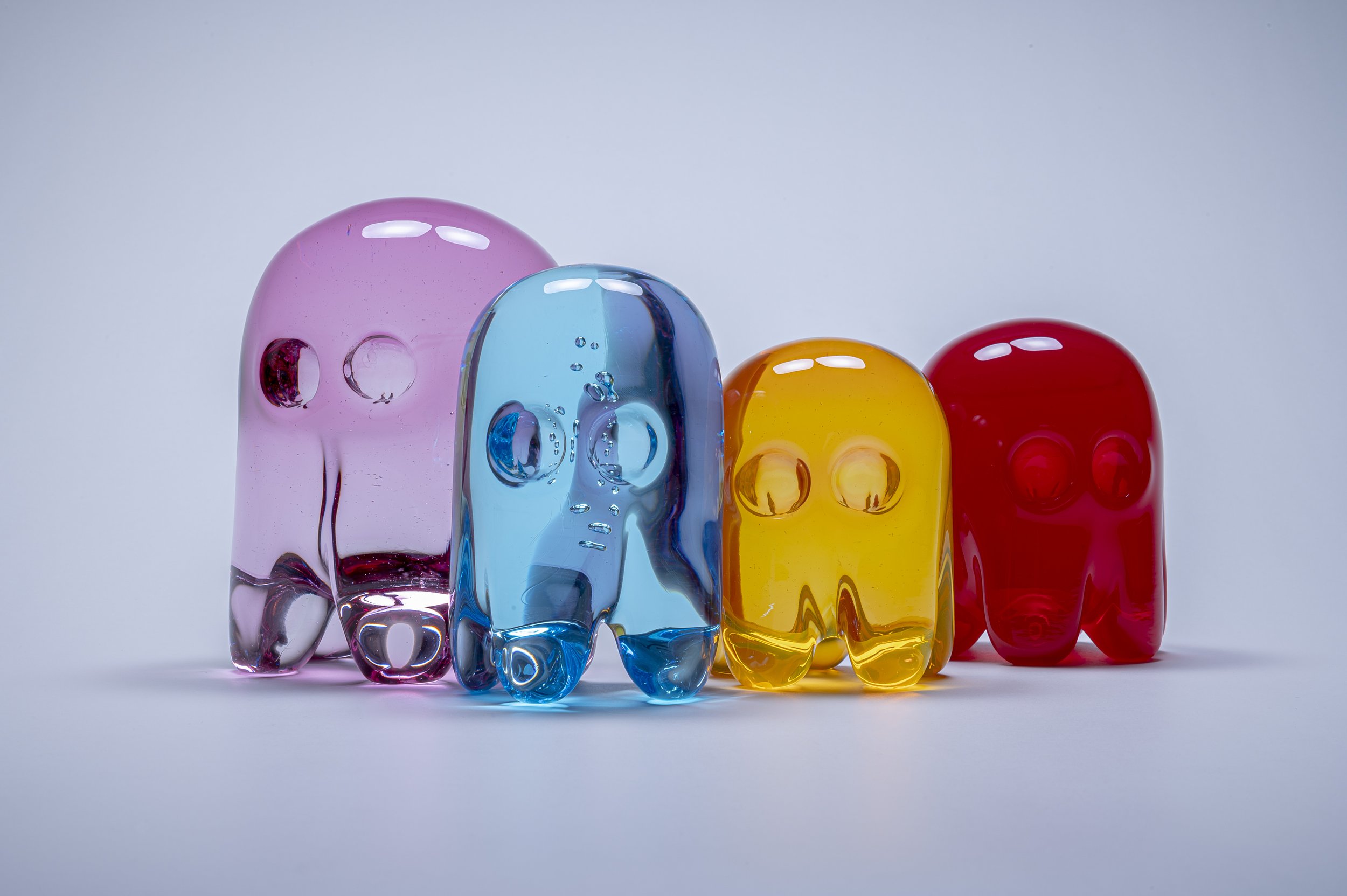Dylan Martinez - Blowing the Art World Away
Photo by Dylan Martinez
Dylan Martinez earned his MFA in Glass at Ball State University, Muncie, Indiana. He has studied with master craftsmen across the U.S. and abroad. His artwork is regularly exhibited throughout the US and internationally.
Dylan's artwork is held in several international public and private collections, most notably, the Imagine Museum in St. Petersburg, Florida. Martinez has been featured in several publications. Dylan designs and creates all his work by hand in his studio in Bingen, Washington.
Dylan’s artwork often examines the boundaries of human perception. His work challenges the viewer’s expectations through the manipulation of light, space, and the optical properties of glass.
While steeped in the traditional techniques in glass making, he constantly strives to discover novel approaches to exploit the material. His hyper-realistic water bag sculptures often trick viewers into believing the glass objects are water-filled plastic bags.
With his latest series, Dylan introduces color into his work for the first time in a few years with his solid sculpted Pac-Man-inspired ghosts that lure the viewer in with their simplistic design and ethereal luminosity
RAINE: What made you sign up for the introductory art course in glass in college? Even if it was a requirement, why glass and not other forms of art (like drawing or pottery)?
DYLAN MARTINEZ: I remember walking by the studio one day and seeing someone working with hot glass for the first time and I knew I had to try it. The material is just so exciting. There aren’t many universities that offer glass-blowing, so I recognized what a rare opportunity it was. As a science major, I somehow got lucky and snagged a spot in the class which was usually reserved for art students.
I was never good at 2-D works like drawing or painting, but I excelled at ceramics and wood class in high school. The fire, molten glass, danger, and difficulty were intriguing, and glass also has so many alluring properties.
RAINE: Why did you fall in love with glass and decide to pursue a career as a gaffer?
MARTINEZ: I fell in love with the material and the process immediately. I grew up working with my dad who was a master stonemason, so I knew early on how to work with my hands. Working with glass opened a door for me to continue my passion for making things while also exploring my own ideas and creativity for the first time.
I love the challenge of glass; the material requires every bit of your attention. From the first gather of hot glass, until it’s put away in the annealer to cool down, you must be completely focused, problem-solve quickly, and be very intentional with every move. Almost every mistake is evident in the final piece, so each sculpture is an artifact of my mastery of the material in those moments of making. It still challenges me 16 years later!
Photo by Polara Studio
RAINE: Where do you find the inspiration for your pieces?
MARTINEZ: I’ve always been curious about the world around me and how it all works- that’s why I studied science in college. I find my best inspiration when I’m fully present, open, and curious. When I’m out on a hike and I’m fully tuned into nature and all its beauty, there is such a good rhythm that flows through me. The ideas flow, good questions come up. The same thing can happen when I blow glass- I get in this cadence with the glass and sometimes I will see something new or try something different that leads to a whole new idea to explore.
It’s more about living authentically and playfully. If I take care to do my best daily, personally, and professionally, in my downtime ideas often bubble up seemingly out of nowhere. It’s also critical that I try new things often both in my work and my daily life. It’s good to have a beginner's mindset. It’s easy to get lost in mastering techniques and you begin to design work that other makers appreciate. Often outsiders to the craft enjoy completely different aspects than a maker does- so it’s good for me to step back from my ideals of perfection when I’m making.
RAINE: You’ve studied with master craftsmen in the US and abroad; how has immersing yourself in these experiences benefited your art and you as a person?
MARTINEZ: Working with a variety of people from different walks of life is invaluable. You get to see different artistic practices, techniques, and philosophies. As one of my mentors put it, “Learn it the way that I do it. If later you decide your way is better, you can always go back.” I like this advice and it helps me engage my curiosity to try new things often both personally and professionally. I don’t have a philosophy of “my way is best,” so I’m constantly striving to learn from anyone, anywhere. I’m always looking to add another “tool” to the toolbox.
RAINE: Why are you so curious about the natural world, and how has this influenced your art?
MARTINEZ: Ironically, my work is not flora or fauna. The natural world influences my life and art by how it affects me. Not only does it ground and recharge me, but it’s also so full of wonder. I see it everywhere and it doesn’t seem like many other people do. Maybe that’s part of my job as an artist to manifest the wonder I find in the world in a way that allows others to see it.
Image by Eric Sarachman
RAINE: What words of wisdom can you share with someone on a similar journey?
MARTINEZ: Make good art! Make lots of it and do some weird stuff. Get it out there, be patient, and keep tight records of all the work you create and send to galleries. Be careful whose advice you follow. Trust your gut. Not many artists make a living on their art, so have realistic expectations.
Be happy with what you have while working for what you want. Focus on being a better version of yourself every day. Let your progress be your motivation. Discipline and obsession will take you further than talent ever will.
Slow and steady is the best way. Challenge yourself often and push yourself outside your comfort zone. I was a craftsman for ten years before I was exposed to art and sculpture. I enjoyed making utilitarian work, but my designs were stagnant. As I began making work from ideas and stopped making my old work my voice began to break through, and I finally began developing a style of my own.
It’s important to really ask yourself questions like: why do you make at all? Why in this medium? Are there other materials that suit this idea better than the medium I’m best at? Being an artist is all about the journey and not the destination. So, explore. The world begins at the edge of your comfort zone.
Photo Credits:
Water Bag Images: Polara Studio
Inverted Logic: Dylan Martinez
Mach 3: Dylan Martinez
Pac-Man Ghosts: Eric Sarachman
Goldfish Cracker Bags: Eric Sarachm
